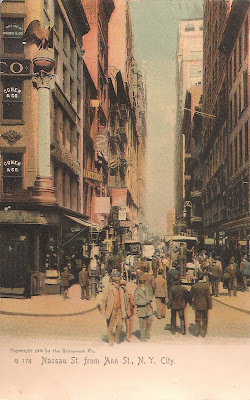Rotograph's scenic view cards don't typically emphasize recognizable human figures, although they occasionally include a few for scale or as an indication of local color. If nothing else, to the extent that these postcards were intended as evidence of having visited a landmark, it might have been considered distracting to have other people depicted in one's souvenirs. This view of Sacandaga Park in the Adirondacks is a bit of an exception. Its aesthetic is more reminiscent of the Real Photo postcards that amateur photographers captured of their own family and friends, except that the group in this case is made up of people who were strangers to the sender and recipient. Perhaps the photographer just liked the composition.
The geological feature shown here lent its name to a popular inn, the High Rock Lodge. Donald R. Williams provides the lodge's history in his book Adirondack Hotels and Inns:
High Rock Lodge owed its popularity to the Sacandaga Amusement Park, the "Coney Island of the Adirondacks." Built on a hillside overlooking the park, it attracted hikers, tourists, parkgoers, and entertainers over its 50-year history. The lodge, operating as a farmhouse inn, was built in 1901 by James Hull for Reuben D. Buckingham. The large rock... located on the site, became a popular hiking destination for the thousands who came to enjoy the Sacandaga Park attractions. In 1940, Ashley and Mildred Dawes purchased the three-story, 54-room hostelry and operated it as a summer lodge and cottages, along with a restaurant. It burned on August 22, 1951.This particular copy was mailed in 1905 to a Rural Delivery address in Olean, NY.


